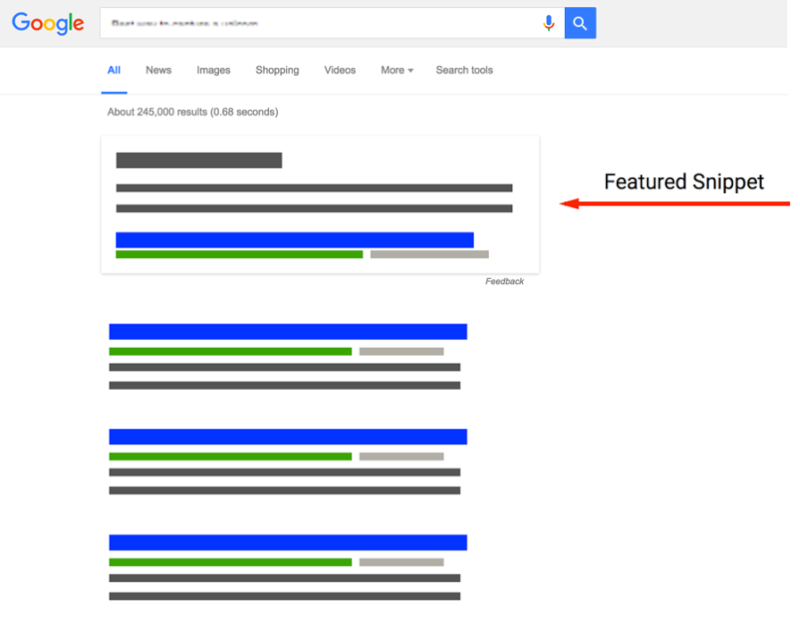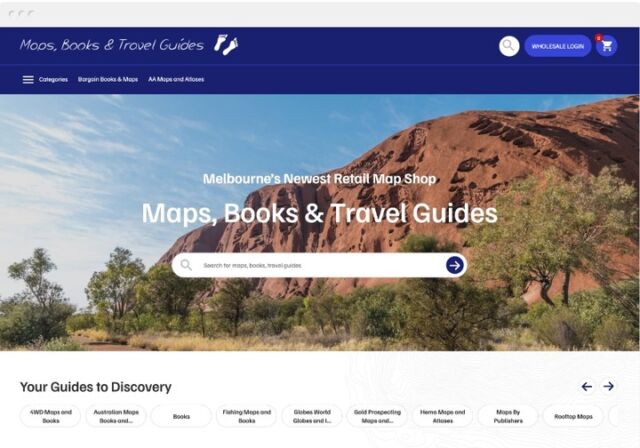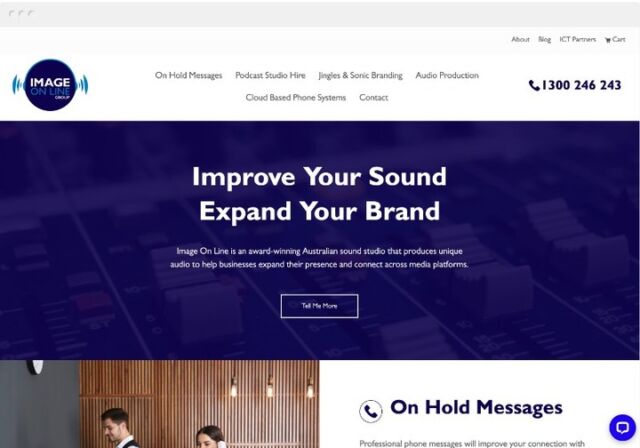
What are the Voice Search Statistics?
Voice search was first introduced in 2010. At that time, it was fairly primitive. To use it, you first had to call a phone number. A robotic voice would then prompt you to “say your keywords”. From there, your phone would load a web page it believed was what you were looking for. Modern voice searches have definitely become more elegant. In 2012 the word error rate for voice searches was at 20%. Now it is only 8% as virtual assistants begin to actively learn from your voice patterns, language and accent. Voice first devices began to appear in 2015, with over 1.7 million devices shipped. This jumped to 6.5 million in 2016 and over 24.5 million in 2017.
This increased availability of voice-first devices saw voice searches jump from 0% to 10% of overall search volume, globally, in 2015 alone. In 2017 onwards, people are 30 times more likely to queries than typed searches. 60% of searches are now done on mobile. Voice searches placed third in SEO trends for 2017 with 22% of voice searches aimed at local content and information. “Near me” searches have grown by more than 130% in the last two years. 56% of adults use voice search to ask for simple facts in order to feel “tech savvy”. But voice search is incredibly important for business. Research shows that 50% of local mobile and voice searches results in a store visit within a day. “Who” based questions are up 134% and “How” phrases are up 81%. But mobile search bounce rates are 9.56% higher than desktop bounce rates – which means we need to make mobile and voice search optimisation top priority in 2018.
How is Voice Search SEO Different to Mobile and Desktop SEO?
Without active data from Google – something many companies are already actively requesting for AdWords and Search Console – it is difficult to say with 100% certainty, how different voice search is from text based search. However, we do have a lot of good anecdotal evidence already. When mobile search debuted, we thought mobile SEO would result in very different search behaviour. But, in the end, it was actually very similar to desktop search and SEO strategy. Searches used the same keyword in mobile as they did on desktop. However, certain keywords are used more on mobile and other keywords are used more on desktop. We also learned to search based on keywords in text.
But information and evidence from early adopters of voice search SEO shows that some searches are the same as they are when typed. However, most voice searches are query based, opening up a whole new category of mobile search, such as “near me” based content. Voice changes how we search. For example, a text based search might look for “Myer store hours”. A voice search, however, might look more like “tell me the store hours for Myer at Chadstone”. Voice search is conversational and hyper-specific. Which means we need to change our thinking in regards to SEO so we can connect with more search functions.
Are Featured Snippets Important for Voice SEO?
Featured snippets are already proving to be an extremely important factor for successful voice search results. We already know that websites that have featured snippets have more visibility. However, recent research shows that devices like Google Home answers user questions by utilising featured snippets. These assistants will then cite the source of the information by stating the website name and even sending a link to the website to your phone or desktop device.
Voice assistants use featured snippets – in the desired position zero – to provide information. As such, SEO companies are devoting time to optimising sites for featured snippets. Further, featured snippets help drive credibility to your brand and drive traffic to your website over a competitor’s website. Finally, Google benefits when your website provides a good featured snippet that helps the searcher. When Google provides a better service, more customers will use it.
Is Google My Business Still Important?
Yes! Google My Business is incredibly important for your ranking but especially for voice search. Voice search is not only hyper-specific, it is location based. As such, businesses need to strategise for local searches if they aren’t already. By having a detailed Google My Business listing, Google can provide searchers on all platforms with your business category, address, phone number, business hours and more to the searcher. You have a better chance of showing on voice search based on location, local businesses and your business category.
Optimising Google My Business Listings
If you already have a Google My Business listing, you need to optimise it. First, identify the phrase or phrases people use most to describe your business’ neighbourhood and work these into your business introduction. Work landmarks and titles of local institutions relevant to your business into your business description as well. Users often won’t remember street names but they will remember landmarks. So optimise for users looking for “cafes near the Ringwood clock tower” over “Maroondah Highway cafes”.
On your website, work phrases like “near me” into title tags, meta, internal links and anchor text to grab this most common voice search phrase. Relevant information about your business and services should be above the fold on each page of your website to make it more likely you will get a featured snippet. You should be sharing your business information – such as phone number and address – in your website footer in plain text. Your business information should be exactly the same in all locations from your website to your business listings to your social media accounts. This way there is no confusion for search results that can cause a local SEO drop.
What You Need for the Best Google My Business Listing
Whether you have a Google My Business listing or not, yet, you need to make sure your listing involves the following. You need to build a healthy number of positive reviews as they help solidify your authority. You should be sure to update your office hours, contact details, address and any other necessary information. Phone numbers need an area code to improve local searches. Your Google my Business intro should be around 400 words describing your products and services, local institutions and landmarks. It is important to associate your listing with relevant categories to describe your business. Choosing the right category is important to boost you to the top of the voice search results.
How Do We Write Content for Voice Search?
You are probably tired of hearing about the importance of content but it really is more important than ever. When users search, they have a clear intent regarding what they’re looking for. For business queries, people are looking for a good, convenient location to book in or visit as soon as possible. For informational and entertainment services, users want an immediate answer. But voice searches are also based on conversational tones. So the way we approach content has to change slightly. Because voice searches are locally focused and longer than typical text keyword search questions, we need to write content based on those criteria. Content needs to be easily identifiable, short, and relevant to user. Keywords are no longer just keywords. They are better described as long tail keywords+. So our strategies need to become more conversational and mimic how real people talk and ask questions.
One of the best ways to create your new keyword strategy is to start taking note of what customers ask when they call. Document the exact words they use. From there, start creating content based on these questions, statements and phrases. SEO research suggests creating pages based on answering common questions, statements and phrases about your business. But be wary of creating duplicate content when creating these pages. Your answers should always be unique content.
What Does Google Say About Content?
Google is very open about the fact that content needs to sound natural. Since the Hummingbird update in 2013, Google’s algorithm considers user intent and contextual meaning of queries. Google Panda also focuses on algorithms that read content the way a human reads content. This means old SEO techniques of keyword stuffing and creating unnatural sentences is truly dead. You should now write content solely for your audience while taking into account different reading techniques. Content on desktop is read in an F shape pattern while, on mobile, only 5% of people actually read text. The majority of people scan the page for what they need. So your content needs to be optimised for scanning.
You should provide plenty of white space, short sentences, simple words, small paragraphs and engaging subheadings. Subheadings should focus on answering questions associated with the main question your page is optimising for. Voice searches can now track search queries and how they are associated. If a user searches for a celebrity then asks “how old is he?”, Google can relate the two searches to each other. So think about what other questions are asked in relation to the main question, just like we find long tail keywords associated with the main page keyword.
How Do We Format Content and Websites for Voice Search?
The most important aspect of content for voice search is going for natural sounding phrases rather than keyword based SEO. A focus on user intent is important, too. Are users looking for your service to book in immediately? Or are they coming to you for information? If you are identifying a lot of “What, Who, How and Why” questions then users are coming to you for research and information. If users are searching for “Where and When” questions, then they are looking to visit your store and/or buy from you. Once you identify the intent of your users, you can write for them. You need to create content that focuses on hyper-specific questions. If you sell digital cameras, rather than optimising for “best digital cameras” which will phase out as voice searches grow stronger, it might be better to optimise for the specific uses of the camera such as, “where can I find waterproof cameras that work with Facebook Live”.
It is recommended that you group common questions on the same page, like we discussed in the previous paragraph. FAQ pages are excellent for this, allowing you to create snippets of content centered around specific questions. You are then more likely to get the all important featured snippet. However, while FAQ pages are excellent options, blogs are the best way to push the success of voice search. Blogs not only allow you to answer hyper specific questions, you are also able to discuss related questions and link to relevant pages on your website to boost your organic desktop and mobile ranking. So if you’re not already blogging, you need to jump in it now!
 What Technical Factors go into Voice Search?
What Technical Factors go into Voice Search?
Content is not the only way of boosting voice search. The structure of your website is incredibly important. Firstly, you must have a mobile responsive website. Mobile first is coming and it’s here to stay. If your website is not optimised for mobile, then you are going to rank lower than mobile responsive competitors. Content and HTML must work together. If you have a high number of pages with “low-text-to-HTML” warnings, then you need to start rethinking the structure of your pages – either modify your HTML or bulk up your written content. Pages need to load fast and be easily navigated on mobile and tablet devices. Your site needs to be easy for Google to crawl – so ensure you are not blocking crawlers with robots.txt!
On the more technical side, structured data with appropriate schema mark ups are important. While they won’t directly affect ranking it gives you an edge over your competition, making your page easier to crawl and navigate. Schemas allow for search enhancements and create visually appealing SERP (search engine result pages). Good site metadata means providing clear information about your website in the source code. Microdata, on the other hand, helps search engines organise and classify your content better.
Is Voice Search a Game Changer?
While this isn’t the “death of the keyboard” just yet, it is a bad idea to ignore the voice search trend. Jumping in now, rather than later, means you have a better chance of gaining top voice search positions early and holding them longer. And with Google pushing Google Home more fiercely than ever – look at the recent Australia-wide sale in the wake of Amazon establishing their company here, where you could buy two Google Home mini for the price of one – it would be a mistake to ignore the evolution of voice search.
Want advice or help keeping up with the fast changing realm of search ranking results? Contact BSO Digital today! As certified Google Partners we are ideally equipped for all your online needs!





 What Technical Factors go into Voice Search?
What Technical Factors go into Voice Search?










